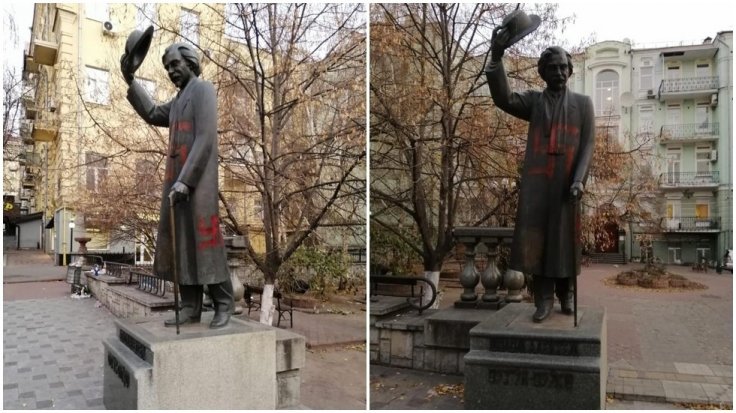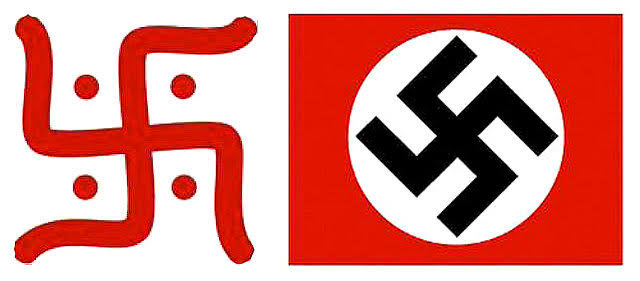Bronze statue of Jewish writer Sholem Aleichem was found smeared with red swastik signs, in Ukrainian capital of Kiev, on Monday. The statue is situated near Brodsky Synagogue, the second largest synagogue of Kiev. Moshe Reuven Azman, the chief rabbi of Ukraine, shared the images on Facebook.

The chief rabbi called the act "the latest provocation", while many commentators called for a quick investigation into the apparent hate crime.
Sholem Rabinovitsh, the Jewish writer with the pen-name Sholem Aleichem, was born and lived during 19th century, in the Russian empire, that now constitutes Ukraine. He is attributed of being the lyricist of the famous musical 'Fiddler on the Roof'. During last years of his life, he was forced into travelling from one country to another, before finally settling in New York, where he breathed his last in 1916.
Swasktik: from a symbol of 'well-being' to a symbol of 'fascism'

'Swastika' means 'well-being' in the ancient Indian language of Sanskrit. 'Swastik'-generally considered an Indic symbol, is used by Hindus, Buddhists and Jains. Inspired by positive undertone, early western travelers started using it back home. In pre-Nazi 20th century, the symbol was widely used as a benign good luck symbol.
Why Nazis embraced Swastik
The Nazi use of the swastika stems from the work of 19th Century German scholars translating old Indian texts, who noticed similarities between their own language and Sanskrit. They concluded that Indians and Germans must have had a shared ancestry and imagined a race of white warriors, whom they called Aryans. After the German loss in World War I and emergence of German nationalism, the theory of Aryan warriors somewhat took a centre stage.
During World War II, about 6 million Jews were killed across Nazi Germany and other German-controlled territories. At the end of the war 'swastik' symbol was banned in Germany. The country made an unsuccessful bid to introduce an EU-wide ban on the symbol, in 2007.








